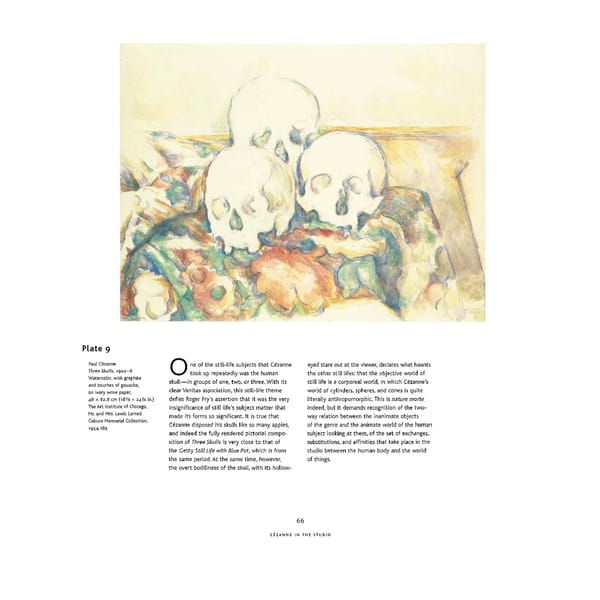Plate 9 Paul Cézanne ne of the still-life subjects that Cézanne eyed stare out at the viewer, declares what haunts Three Skulls, 1902-6 O took up repeatedly was the human the other still lifes: that the objective world of Watercolor, with graphite skull—in groups of one, two, or three. With its still life is a corporeal world, in which Cezanne's and touches of gouache, on ivory wove paper, clear Vanitas association, this still-life theme world of cylinders, spheres, and cones is quite 48 x 62.8 cm (18% x 24% in.) defies Roger Fry's assertion that it was the very literally anthropomorphic. This is nature morte The Art Institute of Chicago, insignificance of still life's subject matter that indeed, but it demands recognition of the two- Mr. and Mrs. Lewis Larned made its forms so significant. It is true that way relation between the inanimate objects Coburn Memorial Collection, Cézanne disposed his skulls like so many apples, of the genre and the animate world of the human 1954.183 and indeed the fully rendered pictorial compo- subject looking at them, of the set of exchanges, sition of Three Skulls is very close to that of substitutions, and affinities that take place in the the Getty Still Life with Blue Pot, which is from studio between the human body and the world the same period. At the same time, however, of things. the overt bodiliness of the skull, with its hollow- 66 CÉZANNE IN THE STUDIO
 Cézanne in the Studio: Still Life in Watercolors Page 80 Page 82
Cézanne in the Studio: Still Life in Watercolors Page 80 Page 82